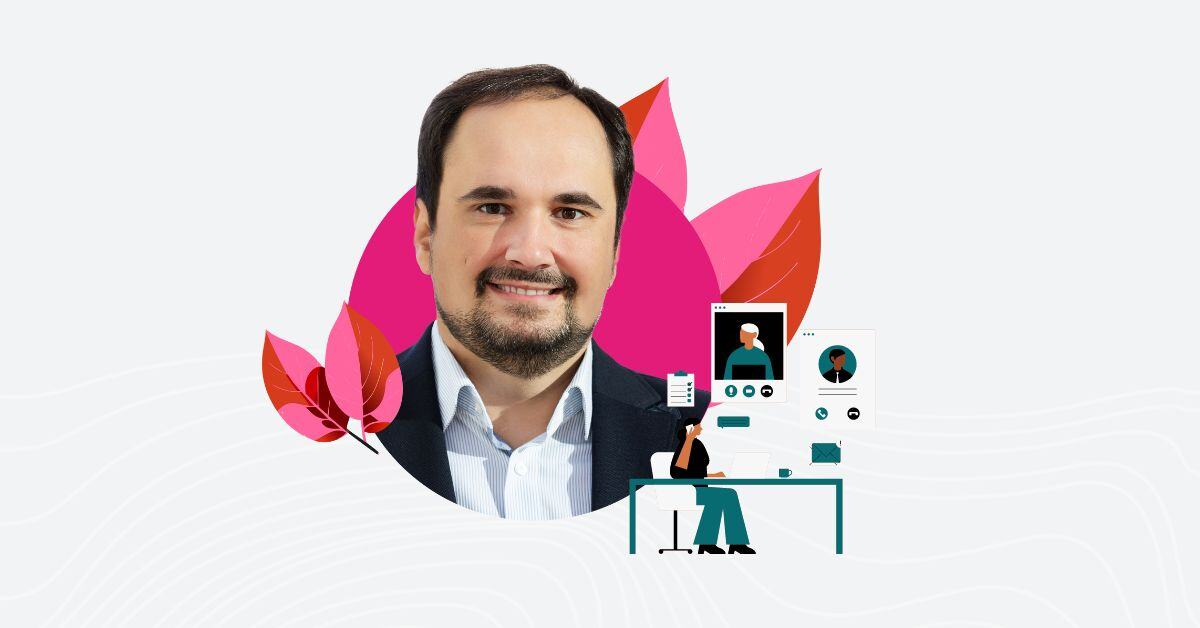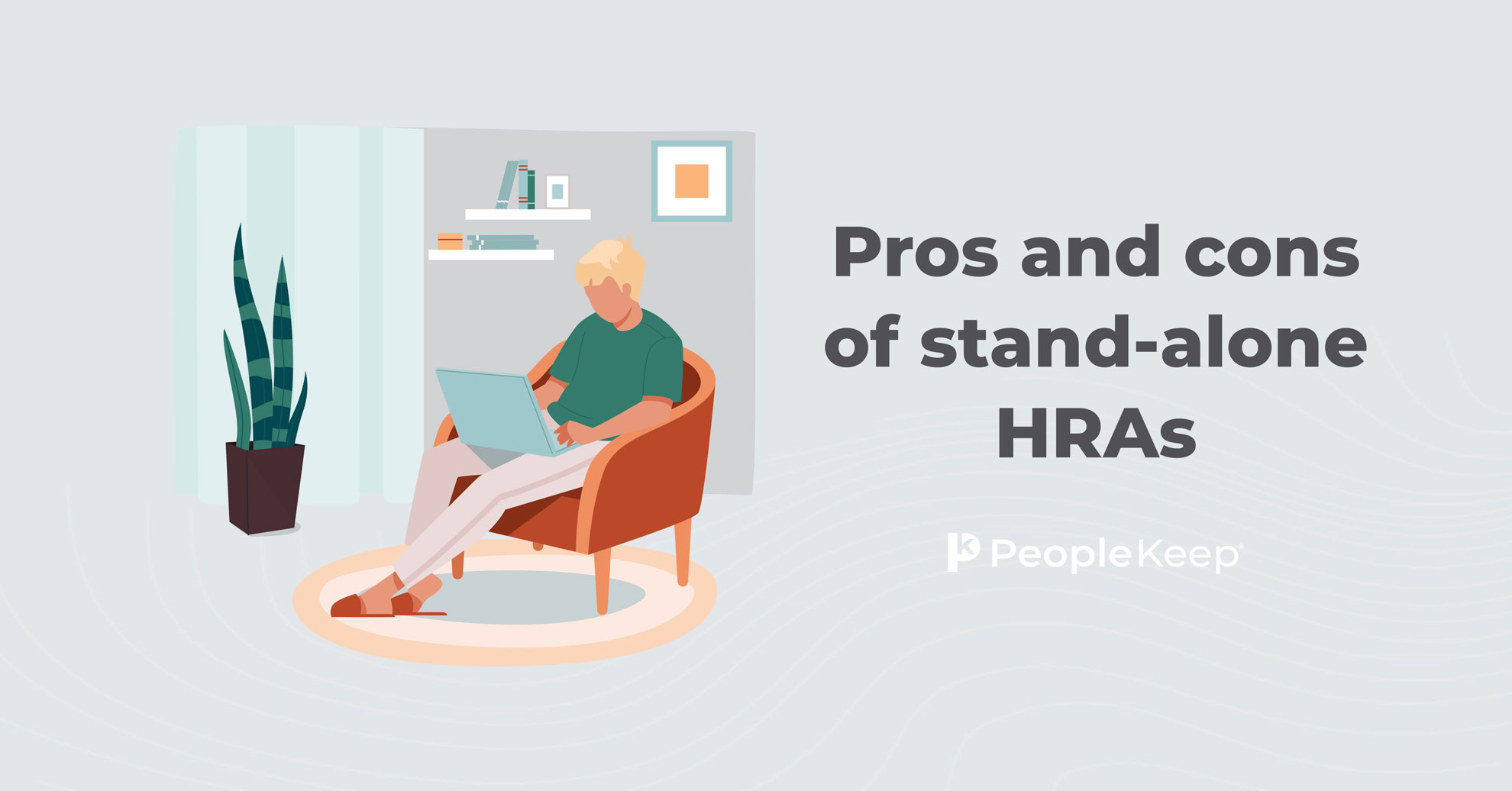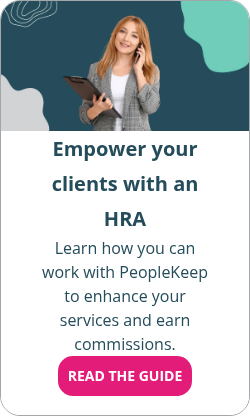Leveraging HRAs as a health insurance broker
By Elizabeth Walker on September 24, 2025 at 11:00 AM
A good health insurance broker wears many hats. Beyond simply selling health insurance, they’re trusted advisors and industry experts. That’s why staying ahead of shifting market trends is vital to retaining clients and growing your book of business.
Brokers are familiar with traditional group health insurance. But what are the alternative options if a group plan isn’t a good fit? That’s where health reimbursement arrangements (HRAs) make a great solution. HRAs give employers greater cost control and flexibility, while allowing employees to choose and enroll in their own health coverage.
In this article, you’ll learn how to incorporate HRAs into your portfolio, so you can provide greater value to your clients and strengthen your knowledge of the health insurance landscape.
In this blog post, you’ll learn:
- What HRAs are, how they work, and the differences between QSEHRAs and ICHRAs.
- The advantages HRAs offer for both brokers and employers.
- When an HRA is the right fit for your client, and the steps you can take to help them implement one.
What is an HRA?
An HRA is a tax-advantaged, IRS-approved health benefit that allows business owners to reimburse their employees for qualified out-of-pocket medical costs. Individual health insurance premiums are also eligible expenses if you offer a stand-alone HRA.
Here’s how it works: your client sets a fixed monthly allowance that their employees can use toward eligible healthcare expenses. Employees pay for the medical service or item first, then submit proof of purchase for reimbursement. Then, your client or their HRA administrator reimburses them tax-free, up to their allowance amount.
Unused balances can carry over month to month. However, the remaining HRA funds will stay with your client at the plan year's end or if the employee leaves the company.
Two stand-alone HRAs that brokers can help clients administer through PeopleKeep’s platform include:
- Qualified small employer HRA (QSEHRA). This HRA is for small companies with fewer than 50 full-time equivalent employees (FTEs) who don’t offer any type of group plan. While the QSEHRA has annual maximum contribution limits, employers can design the benefit to reimburse for only insurance premiums or premiums plus other qualified medical costs. Employees must have a health plan that provides minimum essential coverage (MEC) to use the benefit.
- Individual coverage HRA (ICHRA). This HRA is similar to the QSEHRA, but it’s available to organizations of any size and has no contribution limits. The ICHRA allows employers to design their plan using job-based employee classes. Employees must enroll in a qualifying individual health plan to participate.
With either option, employers can choose whether to reimburse employees for health insurance premiums only or also allow reimbursement for more than 200 types of out-of-pocket medical expenses.
What are the advantages of an HRA for brokers and clients?
A broker’s role is to guide employers toward benefits solutions that balance cost, compliance, and employee satisfaction. Group health insurance can’t always get the job done. By understanding the value of HRAs, you can position yourself as a forward-thinking advisor and open up new opportunities to better serve your clients.
HRAs provide the following advantages for your clients:
- Employers can choose an HRA allowance that fits their budget and employees’ needs.
- There are no surprise renewal hikes based on benefit usage, rigid participation rules, or geographic restrictions.
- HRA reimbursements are free of income tax for employees and payroll tax for employers.
- Employers only reimburse expenses after they review and approve an employee’s claim, keeping their benefit budget secure and safe from overspending on ineligible services.
- Offering a personalized health benefit helps entice talented workers and keep employees satisfied.
- Employers avoid the hassle of shopping for and managing group health insurance policies.
As you can see, brokers who assist clients in offering an HRA can help their clients save money while providing valuable employee health benefits. However, brokers also experience advantages.
HRAs create opportunities to:
- Expand your client base by offering health benefit solutions that fit organizations of any size and budget.
- Retain more accounts by providing a cost-friendly alternative to clients struggling with group plan costs.
- Deliver added value to employers who aren’t ready for or can’t afford traditional employer-supported health coverage.
- Earn commissions for organizations that administer their HRAs with PeopleKeep or Remodel Health.
- Generate new revenue by selling individual health coverage to employees so they can participate in a stand-alone HRA.
- Position yourself as an expert in innovative, alternative benefit solutions, setting you apart from others in your industry.
When is an HRA a good fit for your client?
Before you sign your clients up for an HRA, you must know when to recommend one of these personalized benefits so you can meet their specific needs. Below, we’ll review a few common scenarios your clients may face where an HRA can help.
1. Your client has a diverse workforce.
Many employers today have teams that span different ages, income levels, family structures, and locations. Traditional health benefits have difficulty meeting what works for a young single employee, an older worker with dependents, or a remote employee. And going without a health benefit entirely won’t make your company enticing to job seekers.
An HRA can solve this situation. The QSEHRA allows small businesses that may not have previously had a health benefit to offer their employees a chance to choose their own coverage. Full-time workers are automatically eligible for the benefit, but your client can also extend it to part-time employees and dependents. They can also vary allowances by age and family status.
Like the QSEHRA, ICHRAs allow employees to choose their preferred health plan. This means every worker can find coverage that suits their lifestyle, location, and budget. Employers can also set different allowances and eligibility rules using 11 employee classes — such as hourly, salaried, or seasonal workers — giving your clients greater flexibility.
2. Your client has a limited benefits budget.
Small and midsize employers often want to offer health coverage but either lack benefit funds or can’t absorb the cost of rising group health plan premiums. Annual renewal increases, minimum participation requirements, or the need to spend company money elsewhere can make it feel like providing a comprehensive health insurance benefit is impossible.
A QSEHRA or ICHRA can be a budget-friendly solution here. They allow employers to set a defined contribution allowance that works within their budget. Employees then use those tax-free dollars to buy health insurance and other eligible expenses. This lets clients control their health spending budget, while giving you a viable alternative to present when other coverage options aren’t an option.
3. Your client is expecting their company to grow.
A growing company can be exciting. However, it can also bring potential challenges. Employers scaling from a handful of employees to a larger team often worry about outgrowing their benefits strategy. Traditional options can be difficult to adjust, especially when working with insurers, potentially locking clients into a benefit that doesn’t work with their ever-changing business.
An ICHRA is well-suited for growing companies because it’s scalable as their workforce expands. While organizations of all sizes can offer ICHRAs, they’re especially beneficial for growing or larger employers. For example, the ICHRA satisfies the Affordable Care Act’s (ACA) employer mandate for applicable large employers (ALEs). And because the ICHRA also has no contribution limits, your clients can raise their allowance as their company grows.
4. Your client wants to attract and retain employees.
Health benefits play a major role when hiring and retaining workers. Employers that can’t afford group coverage or only offer limited options risk losing talented employees to competitors with stronger packages. Even if your salaries are attractive, not having quality health benefits can make it hard for a client to stand out.
Both QSEHRAs and ICHRAs help employers offer a compelling, flexible benefit that job seekers and current employees will love. By allowing employees to choose their coverage and reimbursing them for their premiums and other medical expenses, employers show that they care about their health and finances. As a broker, helping your clients offer a personalized HRA gives them an edge in recruitment and employee loyalty.
5. Your client wants to reduce their administrative burden.
Managing a traditional group health plan requires constant attention, including negotiating renewals, tracking participation, and handling enrollment. For many employers, especially smaller organizations without a dedicated HR team, this administrative load isn’t worth it. Even large businesses may not want to spend valuable time and resources managing a group health plan and working with insurance carriers.
HRAs, particularly when paired with an HRA administration platform like PeopleKeep by Remodel Health, take the weight of benefits administration off employers’ shoulders. We help your clients reduce compliance risks, review claim documentation, draft legal documents, and send employee communications so your client can spend their time elsewhere.
How can brokers help their clients offer an HRA?
Brokers aren’t just health insurance professionals but also trusted consultants. Therefore, they play a crucial role in guiding their clients through the process of offering an HRA. With the proper support and tools, you can help your clients design a benefit that aligns with their goals and budget while proving your value as a trusted advisor.
Here are a few steps you can take to help your clients successfully implement an HRA:
- Determine if an HRA is right for them: First, consider your client’s company size, workforce demographics, location, current benefits, and administrative bandwidth. If your client is experiencing significant rate increases or unsustainable self-funded costs, switching to an HRA could create significant savings. Then, you should explain the differences between ICHRAs and QSEHRAs and how they differ from traditional health benefits so you can make an educated recommendation.
- Review their benefits budget: Work with your clients to understand their financial limitations. This step is vital to setting the right eligibility requirements and HRA allowances. Remember, the QSEHRA has maximum limits, while the ICHRA does not.
- Ensure they meet compliance requirements: Guide employers in following IRS rules, nondiscrimination regulations, tax reporting requirements, and other federal laws. For example, ALEs offering an ICHRA must design their benefit with an affordable allowance to comply with the ACA’s employer mandate.
- Partner with an HRA administrator: If your client is a small to mid-sized employer, PeopleKeep by Remodel Health is ideal for simplifying ICHRA or QSEHRA setup, ensuring compliance, and streamlining ongoing benefit management. Larger organizations may benefit from Remodel Health’s ICHRA+ administration solution, which provides a white-glove, hands-on experience and extra support.
- Provide support year-round: Like other health benefits, ongoing support is key to an HRA’s success. Stay engaged with your clients to answer questions, support their employees, and keep their HRA running smoothly. You should also help your clients review their plan design and allowance limits when it’s time for renewal.
Conclusion
While group health insurance may work well for many companies, more and more employers want cost-effective alternatives. Brokers who are experts in various health benefit solutions and can identify when an HRA is the right choice can better meet their clients' unique needs.
With PeopleKeep by Remodel Health, we make it easy for you and your clients to design and manage customized health benefits. We look forward to being your go-to HRA resource so more employers can offer personalized coverage to their teams. Ready to partner with us? Schedule a call with an HRA specialist today.
This article was originally published on January 3, 2020. It was last updated on September 25, 2025.
Check out more resources
See these related articles

Which health reimbursement arrangement is right for your client?
Unsure about which HRA is best for your client? This guide breaks down the different HRA options to help you make an informed decision.

The differences between partnering with a PEO or a broker
Learn the key differences between partnering with a PEO or a broker. Discover which option best suits your business's HR, benefits, and compliance needs.

Pros and cons of stand-alone HRAs
Stand-alone HRAs can offer flexibility and control over healthcare expenses, allowing employers to customize plans to meet their employees' needs.



